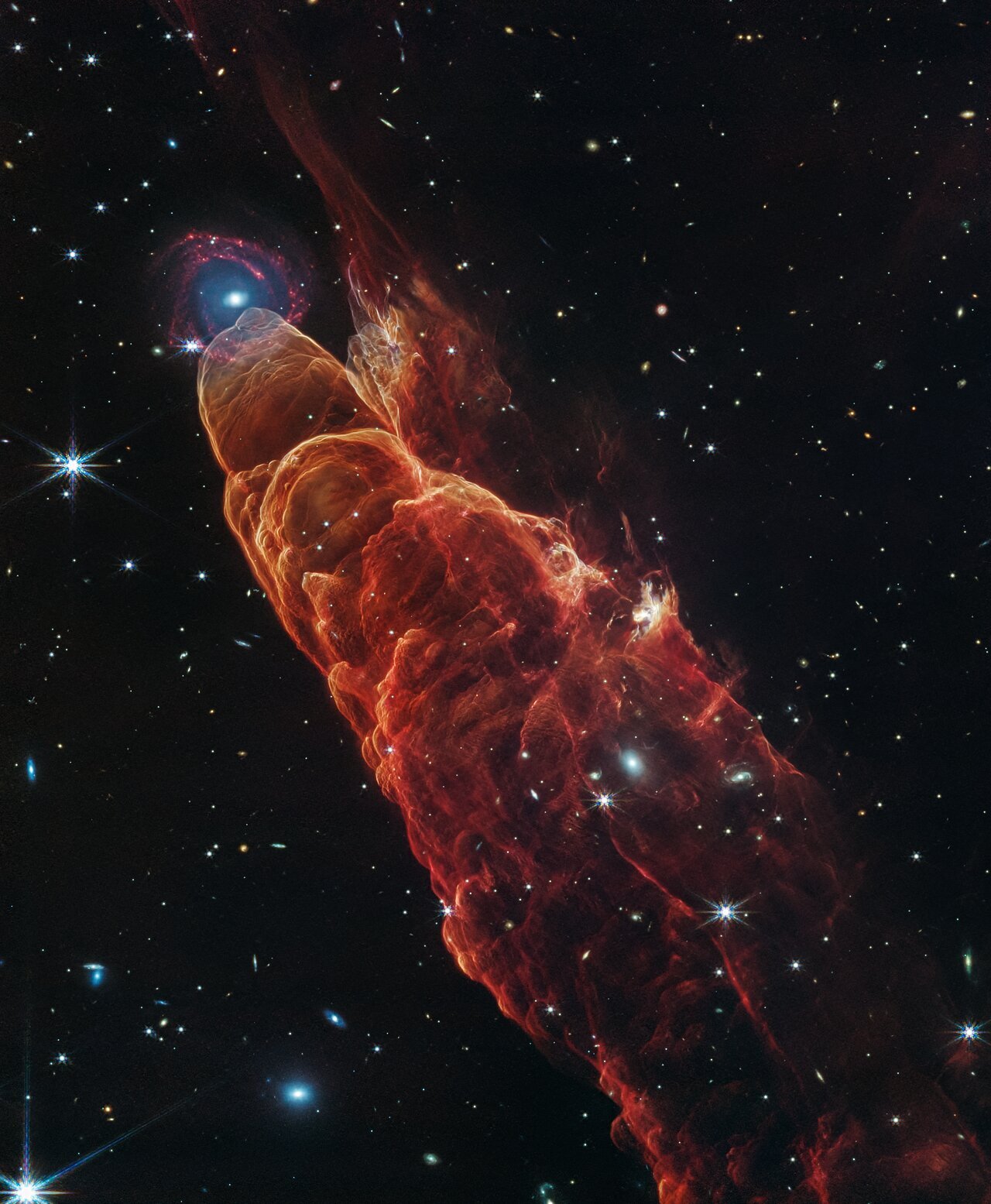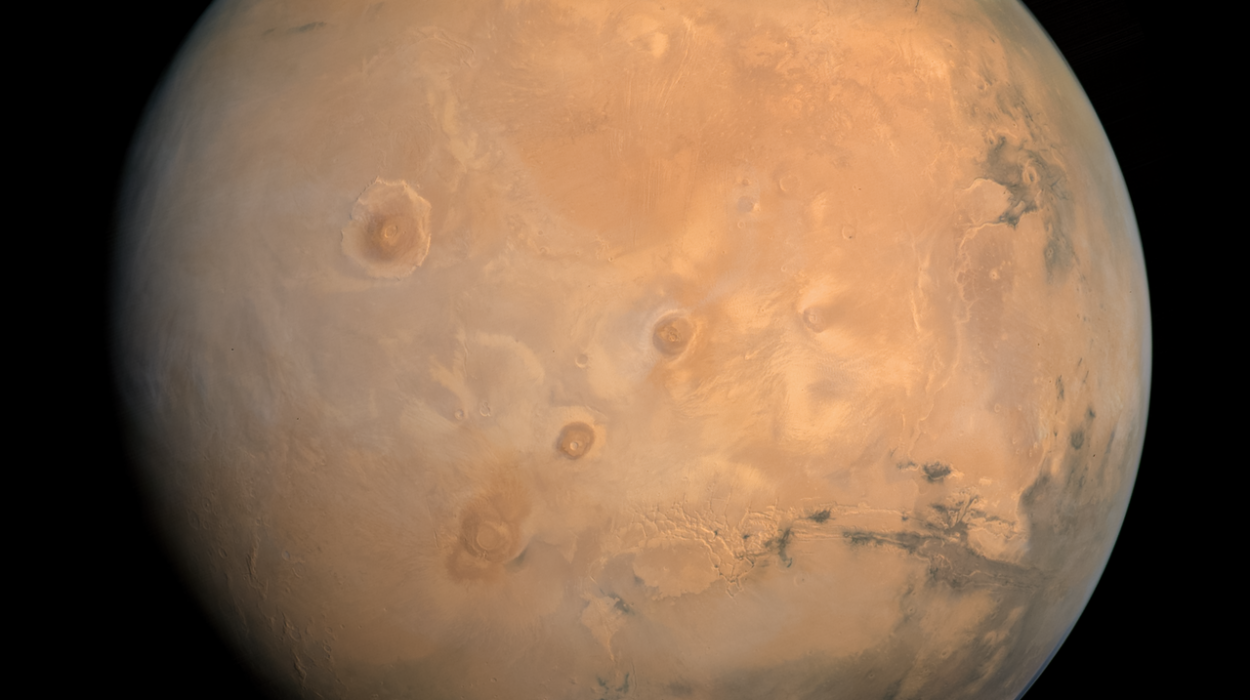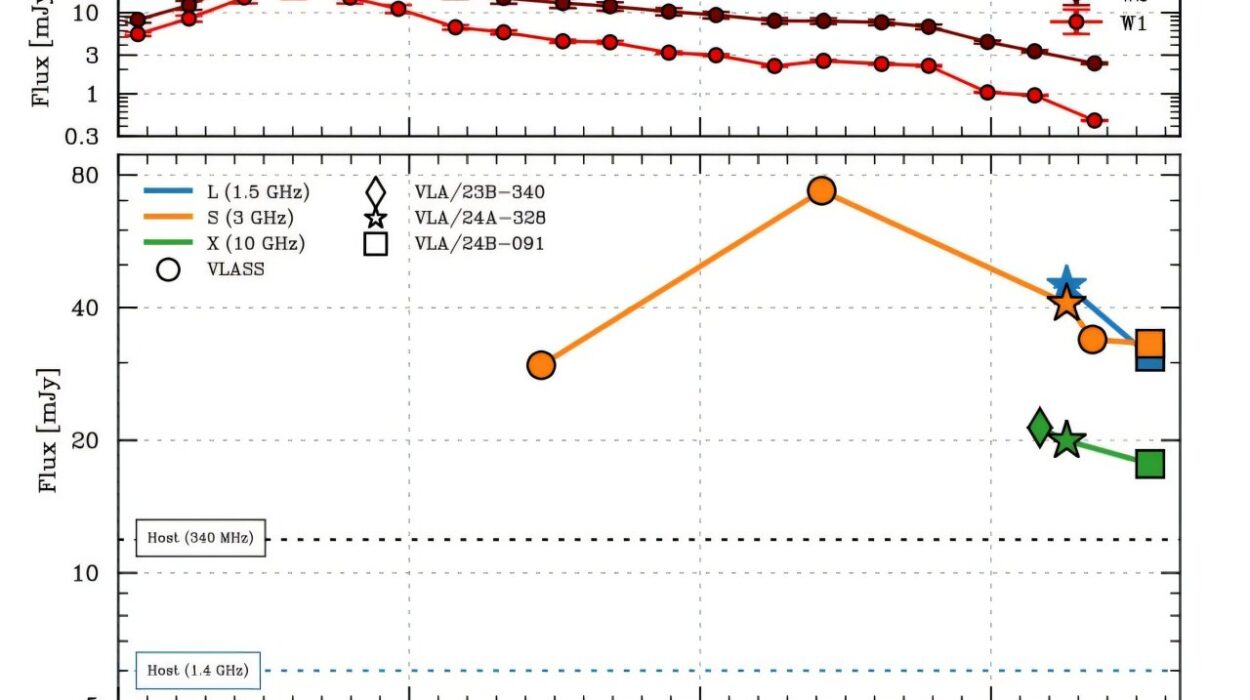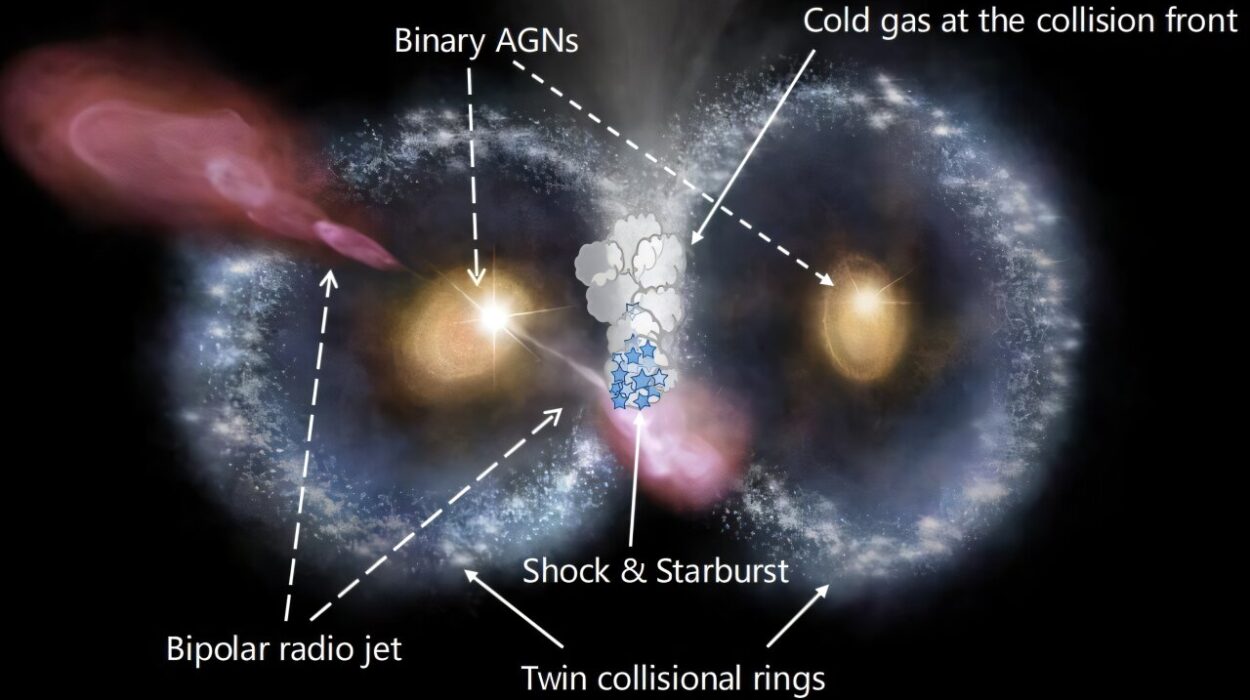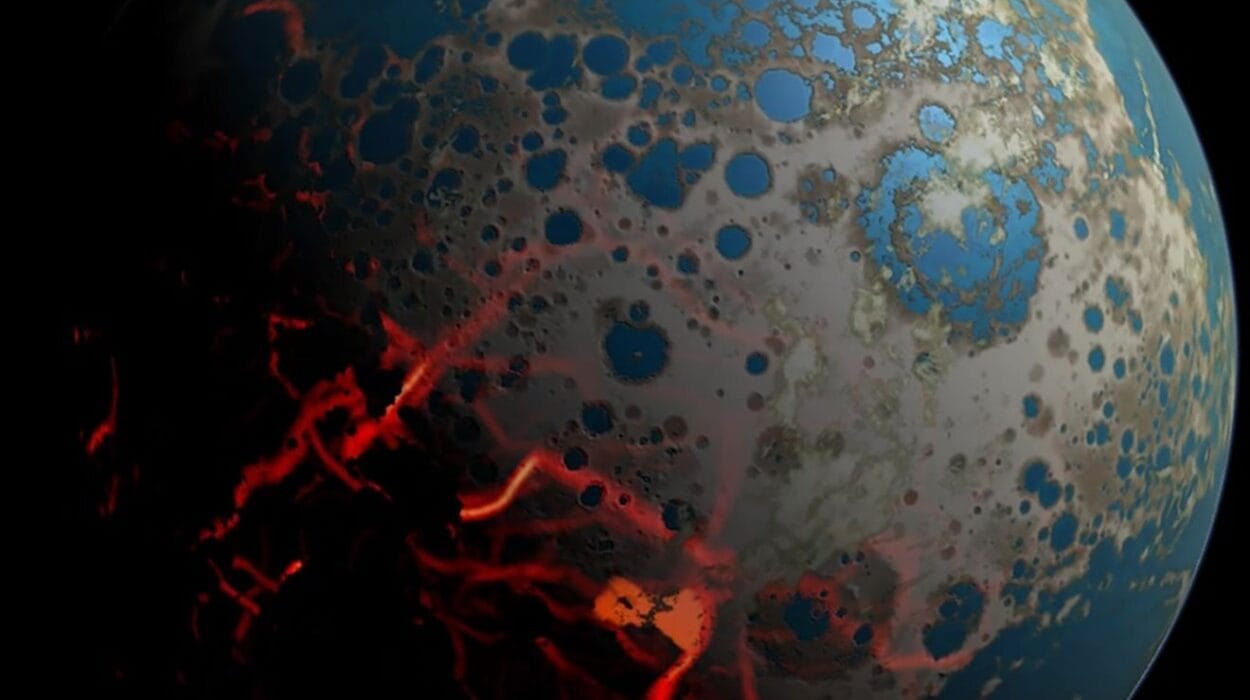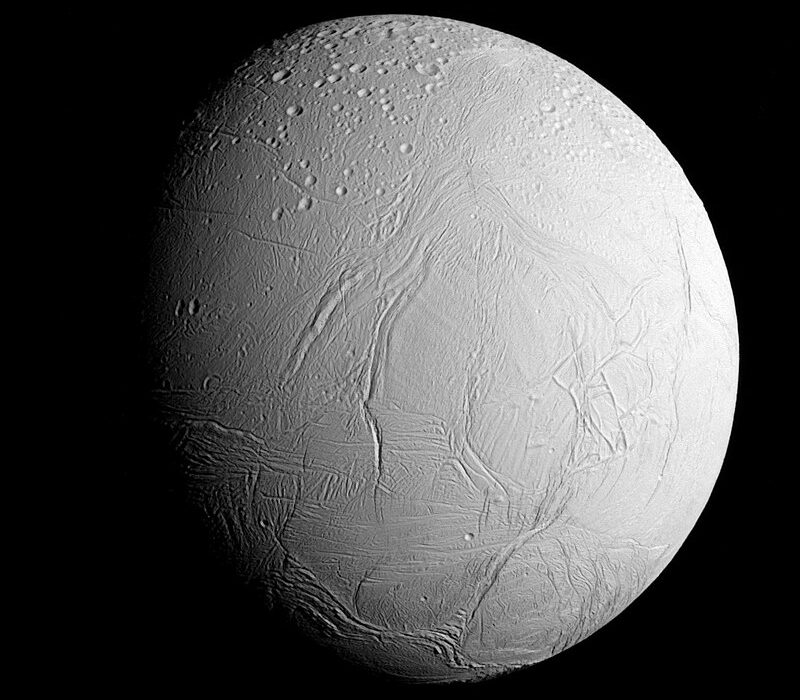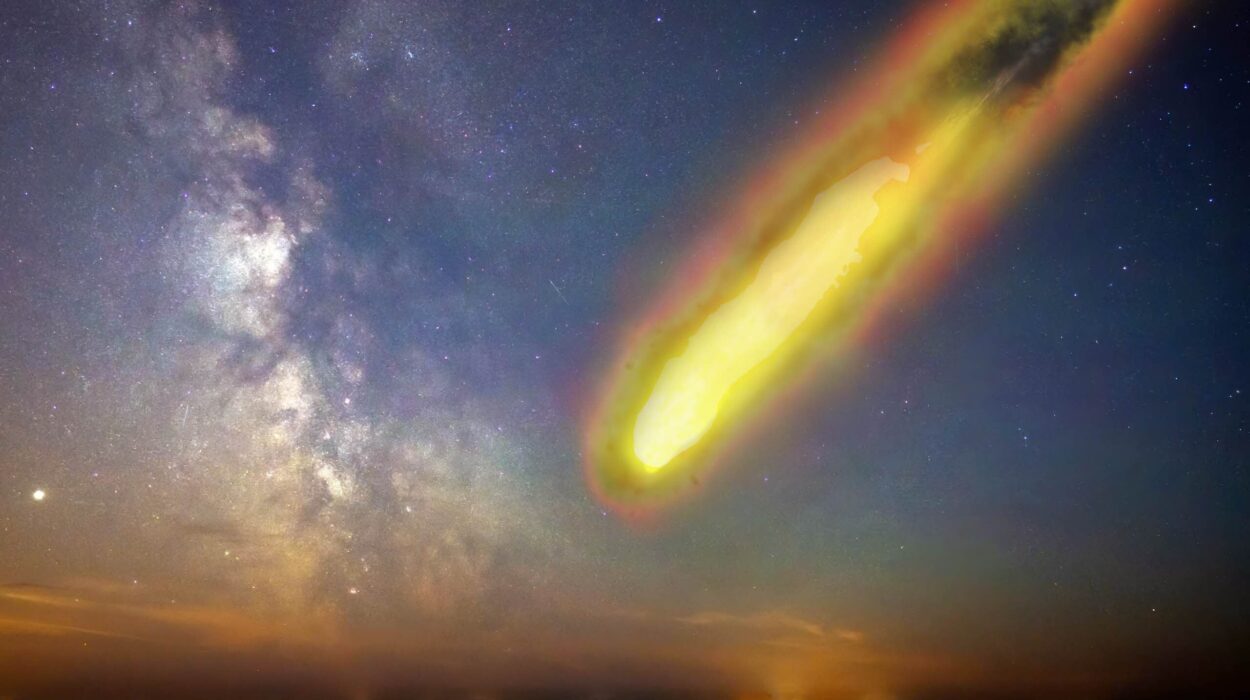The NASA/ESA/CSA James Webb Space Telescope (JWST) has once again revolutionized our view of the cosmos, capturing an awe-inspiring image of the Herbig-Haro 49/50 (HH 49/50) protostellar outflow with a striking, perfectly aligned spiral galaxy in the background. This mesmerizing juxtaposition of a nearby, turbulent stellar nursery and a faraway, tranquil galaxy is not just a stunning celestial portrait—it provides an unprecedented opportunity for astronomers to explore the intricate details of star formation and cosmic evolution.
Thanks to Webb’s unmatched infrared imaging capabilities, scientists can now peer deeper into HH 49/50’s turbulent outflow, unraveling the secrets of how young stars shape their surroundings. This extraordinary cosmic pairing, located approximately 630 light-years away in the Chamaeleon constellation, offers fresh insights into the dynamic processes governing star birth, revealing the delicate interplay between newborn stars and their environment.
Herbig-Haro 49/50: The Cosmic Tornado Reimagined
Herbig-Haro objects like HH 49/50 are dazzling celestial phenomena formed when powerful jets of gas, ejected from a nascent star, slam into surrounding interstellar material. These high-speed collisions generate shock waves, heating the gas and dust, which then cools by emitting light across the electromagnetic spectrum, particularly in visible and infrared wavelengths.
HH 49/50 was first observed in 2006 by NASA’s Spitzer Space Telescope, which revealed its distinctive swirling structure. At the time, astronomers dubbed it the “Cosmic Tornado” due to its helical shape, but one mystery remained unsolved—a fuzzy object at the tip of the so-called tornado. Now, thanks to Webb’s extraordinary resolution, scientists have solved this puzzle: the hazy object is a magnificent, distant spiral galaxy, adding another layer of wonder to this already remarkable discovery.
Unlike Spitzer, which had lower-resolution infrared imaging, Webb’s Near-Infrared Camera (NIRCam) and Mid-Infrared Instrument (MIRI) provide a much sharper and more detailed view. The new composite image exposes the chaotic nature of the HH 49/50 outflow in exquisite clarity, unveiling fine details of the shockwave structures within the turbulent gas and offering a breathtaking cosmic scene unlike any other.
A Window Into Star Formation: What HH 49/50 Reveals About Our Cosmic Origins
HH 49/50 resides in the Chamaeleon I cloud complex, one of the closest active star-forming regions in our Milky Way. This vast stellar nursery is similar to the environment in which our own Sun likely formed around 4.6 billion years ago. By studying these young stars and their outflows, astronomers gain critical insights into the mechanisms that drive star formation across the universe.
Observations indicate that the HH 49/50 outflow is moving at speeds of 100–300 kilometers per second, carving through the dense gas of its surroundings. These outflows play a crucial role in regulating star formation by dispersing excess material, preventing the protostar from accumulating too much mass.
With Webb’s NIRCam and MIRI, scientists have identified glowing hydrogen molecules, carbon monoxide, and energized dust grains within the outflow, highlighted in brilliant shades of orange and red. These observations allow astronomers to model the properties of the jet more precisely, shedding light on how young stars interact with and shape their environment.
Tracing the Origin: The Protostar Driving HH 49/50’s Jet Activity
The dramatic arcs and shockwave patterns within HH 49/50 act as cosmic breadcrumbs, pointing back to the young star responsible for this breathtaking display. Scientists suspect that a protostar known as Cederblad 110 IRS4 (CED 110 IRS4), located about 1.5 light-years away from HH 49/50, is the likely driver of the outflow.
CED 110 IRS4 is classified as a Class I protostar, meaning it is in a crucial phase of its early life—actively accumulating mass from the surrounding gas and dust. This phase lasts tens of thousands to a million years, during which the protostar remains enshrouded in a thick, swirling disk of material.
Recent Webb observations of CED 110 IRS4 have provided an inventory of the icy molecules in its environment, offering valuable insights into the chemistry of star-forming regions. These findings are crucial because they help scientists understand how water and organic molecules—essential ingredients for life—are distributed in young planetary systems.
Interestingly, not all arcs within HH 49/50 point directly to the same origin. One particularly intriguing feature—an outcrop at the top right of the main outflow—could represent an entirely separate jet from another young star or an irregular break in the main outflow. Future Webb observations will aim to resolve this mystery.
The Perfect Cosmic Coincidence: A Spiral Galaxy in the Background
Perhaps one of the most visually striking elements of Webb’s HH 49/50 image is the serendipitously aligned spiral galaxy that appears to sit at the very tip of the outflow. However, this is merely a cosmic illusion—the galaxy is far more distant than HH 49/50 and is completely unrelated to the protostellar activity in the foreground.
Despite their lack of physical interaction, the juxtaposition of these two celestial objects creates a breathtaking scene. The spiral galaxy, viewed face-on, features a prominent central bulge, represented in shades of blue, which houses older stars. Its structure suggests it could be a barred spiral galaxy, characterized by an elongated bar of stars extending from its center.
Reddish clumps scattered within its spiral arms indicate regions of warm dust, where new stars are forming. The galaxy also exhibits several evacuated cavities—bubbles created by massive star formation—which resemble those seen in nearby galaxies studied by Webb’s PHANGS (Physics at High Angular resolution in Nearby Galaxies) program.
Although this galaxy and HH 49/50 are entirely separate in space and time, their chance alignment in this image creates a stunning visual narrative—one of cosmic contrasts between the turbulent birth of a young star and the serene, organized beauty of a mature galaxy.
A Glimpse Into the Future: The Evolution of HH 49/50
While HH 49/50 is a temporary celestial phenomenon, the distant galaxy will persist long after the outflow has faded. Over thousands of years, the edge of HH 49/50 will continue to expand, eventually obscuring the background galaxy.
This underscores the transient nature of Herbig-Haro objects, which last only a few thousand years—a blink of an eye in cosmic terms. The protostellar jets will eventually dissipate as the young star matures and stops ejecting material, transitioning into a fully developed star.
By studying HH 49/50 with Webb, astronomers gain a front-row seat to the earliest stages of stellar evolution, offering profound insights into the processes that shaped not only our Sun but countless other stars in the universe.
Final Thoughts: A Cosmic Masterpiece of Science and Serendipity
The James Webb Space Telescope continues to transform our understanding of the cosmos with breathtaking images like this one. HH 49/50’s spectacular outflow, set against the backdrop of a majestic spiral galaxy, is a striking testament to the beauty and complexity of the universe.
This discovery exemplifies the power of Webb’s cutting-edge technology—not only to solve longstanding astronomical mysteries but also to reveal unexpected wonders. As we continue to explore the depths of space, who knows what other cosmic masterpieces Webb will uncover?
One thing is certain: the universe is far more intricate, dynamic, and awe-inspiring than we ever imagined.
